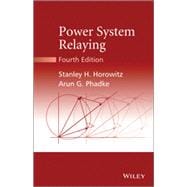With emphasis on power system protection from the network operator perspective, this classic textbook explains the fundamentals of relaying and power system phenomena including stability, protection and reliability. The fourth edition brings coverage up-to-date with important advancements in protective relaying due to significant changes in the conventional electric power system that will integrate renewable forms of energy and, in some countries, adoption of the Smart Grid initiative.
New features of the Fourth Edition include:
- an entirely new chapter on protection considerations for renewable energy sources, looking at grid interconnection techniques, codes, protection considerations and practices.
- new concepts in power system protection such as Wide Area Measurement Systems (WAMS) and system integrity protection (SIPS) -how to use WAMS for protection, and SIPS and control with WAMS.
- phasor measurement units (PMU), transmission line current differential, high voltage dead tank circuit breakers, and relays for multi-terminal lines.
- revisions to the Bus Protection Guide IEEE C37.234 (2009) and to the sections on additional protective requirements and restoration.
Used by universities and industry courses throughout the world, Power System Relaying is an essential text for graduate students in electric power engineering and a reference for practising relay and protection engineers who want to be kept up to date with the latest advances in the industry.








